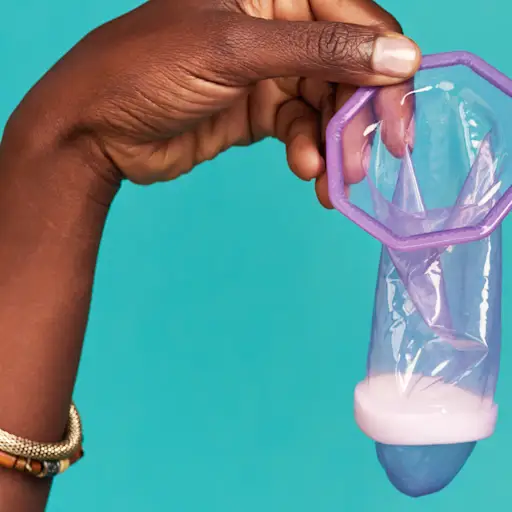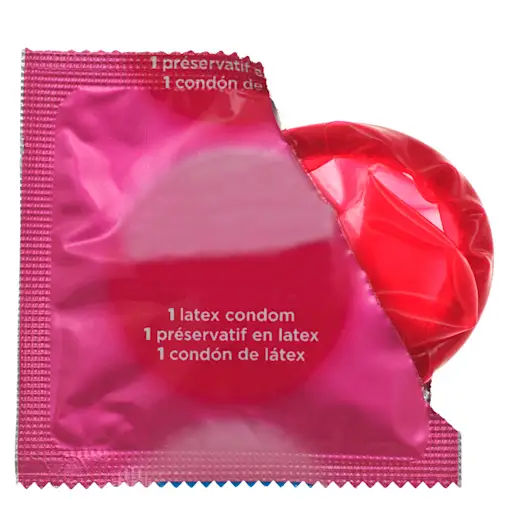Condom Refresher: 10 Facts Worth Remembering

There’s a tonof options when it comes to birth control, but there’s only one that also protects you against sexually transmitted infections (STIs). That’s right, we’re talking about good old-fashioned condoms. Despite their ubiquity, you may still have questions about this tried-and-true barrier method (even if you’ve been sexually active for years). With so many on the shelves of your local pharmacy, how do you know which one you can rely on? Keep reading to learn which types are best for STI prevention, which might work best for you, and common myths you should stop believing.

Condoms Prevent STIs Transmitted by Bodily Fluids
Condoms are the best way to reduce your risk of STIs if you’re having sex, says Jonathan Schaffir, M.D., an obstetrician-gynecologist (OB/GYN) at the Ohio State University Wexner Medical Center in Columbus. “Many STIs are transmitted by bodily fluids, particularly semen and vaginal secretions,” he explains. “So a barrier that prevents the spread of those fluids from one person to another is going to prevent that transmission of bacteria and viruses.” These include things like HIV, chlamydia, and gonorrhea—and latex condoms are “highly effective” at protecting against these.

Condoms Block Skin-to-Skin STI Transmission
“Some STIs are transmitted by skin-to-skin contact, most notably things like genital warts,herpes, or even syphilis,” Dr. Schaffir says. The hitch? They can't cover all the skin that might contain the infection. For instance, genital warts from HPV may appear on the scrotum. Still, wearing a condom helps reduce the risk, but if you or your partner have active lesions somewhere that can't be protected, it's safest to abstain.

Certain Condoms Are More Effective Than Others
All of that said, not all condoms are created equal, says Aparna Sridhar, M.D., associate professor of obstetrics and gynecology at the David Geffen School of Medicine at the University of California – Los Angeles. In fact, there’s a variety of condom types on the market, in different sizes, shapes, materials, and even flavors—and some of them offer better protection against STIs than others. Next, we’ll break down each of the main types you can buy—and pros and cons of each.

Internal Condoms Do Work Against STIs
While most people know about condoms that can be worn over the penis (sometimes called “male” or external condoms), there are also condoms that can be worn inside the vagina (“female” or internal condoms). “These are single-use, non-latex condoms that are tailored to fit the vagina,” Dr. Sridhar explains. She says some people may use internal condoms if one partner has erectile dysfunction or is on their period. They’re also just as effective as external condoms at protecting against STIs, per the National Institutes of Health (NIH). You can buy internal condoms online or get them with a prescription at the drug store.

Latex Condoms Are Rockstar STI Barriers
Latex is the most common condom material and it's also the top choice for STI prevention; the Centers for Disease Control and Prevention (CDC) says they’re “highly effective” at preventing transmission of HIV, for example. “Latex condoms are very effective because they’re impermeable, so they don’t allow any fluid or microorganisms to get through,” Dr. Schaffir says. That said, some people are sensitive or allergic to latex—so if that’s you or your partner, it can cause some irritation, he adds. But there are other materials. Read on for more on those.

Latex Allergy? Polyurethane Condoms to the Rescue!
Condoms also may be made out of polyurethane, says Dr. Schaffir. Like latex, this material is impermeable, so it acts as an excellent barrier against STIs—but there’s a catch: “Polyurethane is thought to be a little bit stiffer and thought to break more easily,” Dr. Schaffir warns. There's some research that found that breakage and slippage rates for polyurethane condoms were 8.4%, compared with 3.2% for latex condoms. That said, if you can't use latex, these are still a great option for people want to reduce their risk of STIs. If pregnancy would be an all-out disaster, women can consider using a back-up contraception like the patch, pill, or ring.

‘Natural’ Condoms Have Pros and Cons
最后一个主要类型的安全套是一种天然的膜or “lambskin” condom, "for people who want a 'natural’ feel,” Dr. Schaffir says. These are actually made out of lamb intestine (yeah—not exactly animal friendly). “The trouble is, though, they can be slightly porous. The microscopic holes are not big enough generally to allow sperm to go through, but they may not be the best for preventing STIs.” The CDC also doesn’t recommend natural membrane condoms for STI and HIV prevention since clinical studies have shown they aren’t effective.

Condoms Are for Oral and Anal Sex, Too
What about oral and anal sex—should you wear a condom for that? Yes, says Dr. Schaffir, because there’s potential exchange of bodily fluids. Many STIs can be passed via oral sex, including chlamydia, gonorrhea, herpes, syphilis, and HPV, per the CDC. In the case of oral sex on a woman, Dr. Sridhar adds, dental dams are an option—these are sheets of latex or polyurethane that can be placed over the vaginal opening. “But there is a potential for infectious fluids to transfer despite their use,” she notes, “and the safety is not completely established when it comes to STI prevention.”

Don’t Forget Your Lube
Using lubricant with your condoms can be important, too, says Dr. Schaffir. But the type of lubricant you use is key, especially when it comes to STI- and pregnancy-prevention. “In general, water-based lubricants are best when used with condoms—particularly with latex and polyurethane condoms—because oil-based lubricants like baby or mineral oil can make the condom weaker and it can break,” he says. Some condoms come pre-lubricated, too, according to Planned Parenthood, but adding extra can help prevent them from breaking—and just feel better in general.

These Misconceptions Need to Be Put to Rest
You may have heard that condoms take the pleasure out of sex, or that if you use condoms, you must not trust your partner—these are myths, says Dr. Sridhar. “In fact, male condoms may help prolong sexual intercourse and prevent premature ejaculation,” she says. If fit or sensation are issues, know there are many condoms out there with varying thicknesses and textures. “It’s just a matter of finding which condom works,” Dr. Sridhar says. Lastly, don’t forget: Condoms aren’t just for young people! You can get STIs at any age.

Talk About Condoms and STIs With Your Partners
To reduce the risk of STIs, you should use a new condom each time you have sex. Before having sex with a new partner, it’s a good idea to talk about what you’re personally comfortable with. “Not everyone will follow all the ‘safe sex’ recommendations but the risk persists for everyone, so it may be good to have an open discussion with each new partner,” Dr. Sridhar says. “Ask theirprevious STI historyto make a better-informed choice about the preventative measures and have a healthy relationship from the start.”
CDC Condom Fact Sheet:疾病控制和预防中心。(2020.) “Condom Fact Sheet in Brief.”cdc.gov/condomeffectiveness/brief.html
Condom Breakage Study:Obstetrics and Gynecology. (2003.) “Contraceptive effectiveness of a polyurethane condom and a latex condom: a randomized controlled trial.”pubmed.ncbi.nlm.nih.gov/12636960/
Condom Use Tips:Planned Parenthood. (2020.) ‘How to put a condom on.”plannedparenthood.org/learn/birth-control/condom/how-to-put-a-condom-on
Dental Dams:疾病控制和预防中心。(2016.) “Dental Dam Use.”cdc.gov/condomeffectiveness/Dental-dam-use.html
Internal Condoms:National Institutes of Health. (2020.) “Female condoms.”medlineplus.gov/ency/article/004002.htm
STIs and Oral Sex Fact Sheet:疾病控制和预防中心。(2020.) “STD Risk and Oral Sex - CDC Fact Sheet.”cdc.gov/std/healthcomm/stdfact-stdriskandoralsex.htm
Lara is a health writer, trauma-informed art therapist, and registered associate marriage and family therapist practicing in Los Angeles. She is also a former digital editor for HealthCentral, covering Sexual Health, Digestive Health, Head and Neck Cancer, and Gynecologic Cancers. In a past life, she worked as the patient education editor at the American College of OB-GYNs and as a news writer/editor at WTOP.com.

